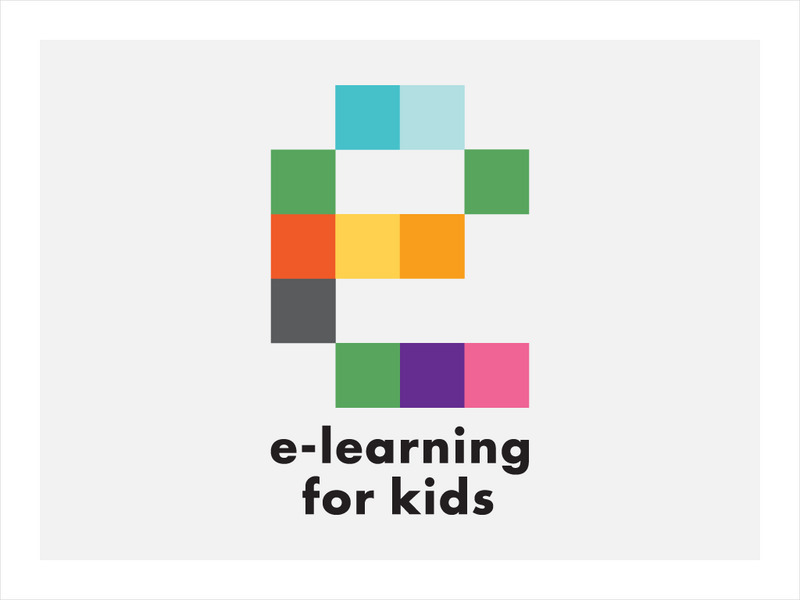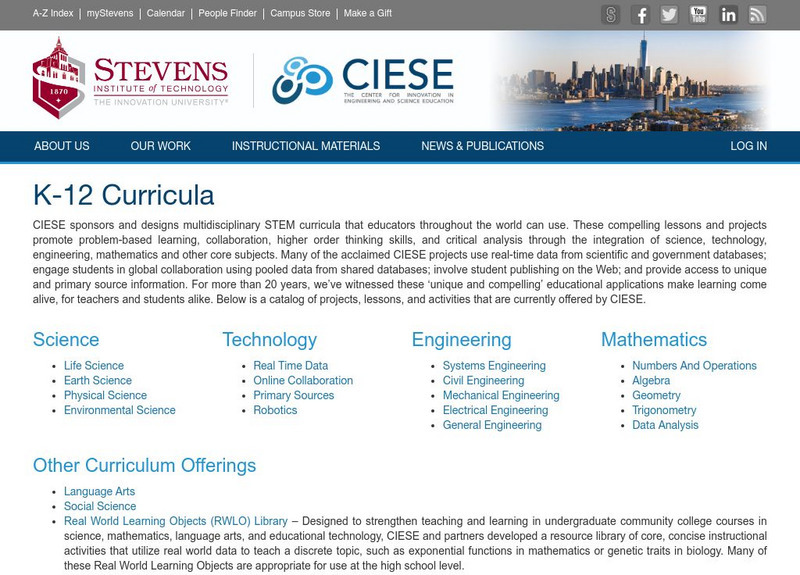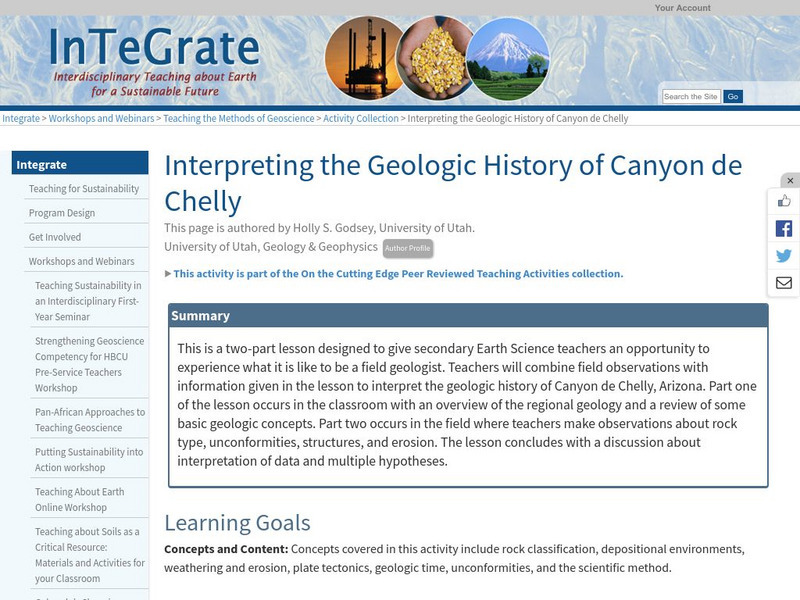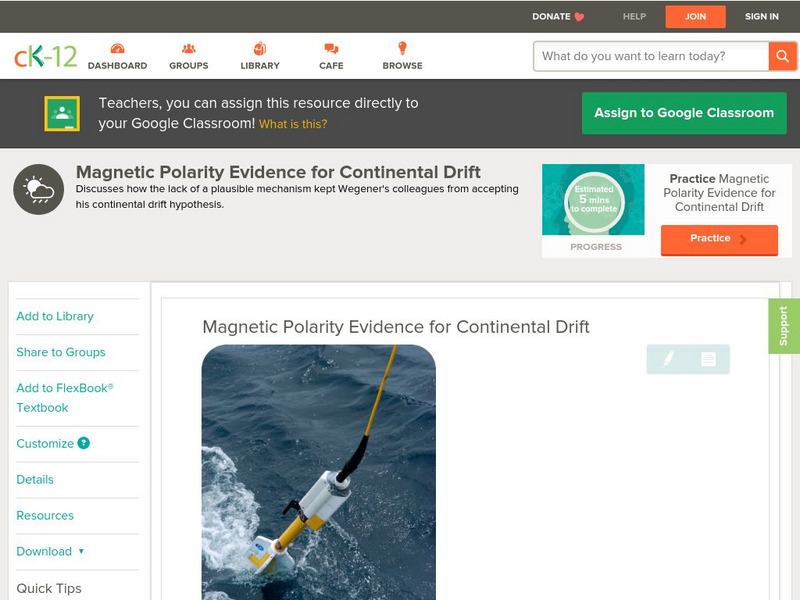Extreme Science
Extreme Science: How Old Is the Earth?
We say Earth is 4.6 billion years old, but how do we know? How do we measure its age? This article focuses on these questions and how long life has been on Earth.
E-learning for Kids
E Learning for Kids: Science: Seychelles: Earthquakes and Effects
Students learn about what happens inside the Earth to cause an earthquake, how earthquakes are measured, their impact on the surface, and safety precautions to take during an earthquake.
CK-12 Foundation
Ck 12: Earth Science: Magnetic Evidence for Seafloor Spreading
How magnetic reversals on the seafloor provide evidence for seafloor spreading. [Free Registration/Login may be required to access all resource tools.]
CK-12 Foundation
Ck 12: Earth Science: Magnetic Evidence for Seafloor Spreading
[Free Registration/Login may be required to access all resource tools.] How magnetic reversals on the seafloor provide evidence for seafloor spreading.
CK-12 Foundation
Ck 12: Earth Science: Volcano Characteristics
[Free Registration/Login may be required to access all resource tools.] What volcanoes are and where they are located.
CK-12 Foundation
Ck 12: Earth Science: Groundwater Pollution
[Free Registration/Login may be required to access all resource tools.] How groundwater can be polluted.
Alabama Learning Exchange
Alex: Actions at Plate Boundaries
This lesson will allow the students to understand the cause and effects of plates interactions. The students will learn that plate boundaries function as a release for much of the Earth's potential energy. The students will be able to...
Scholastic
Scholastic News: Found: A Missing Tectonic Plate
Scientists recently discovered a missing tectonic plate known as the Farallon plate beneath California. This article explains what the Farallon plate is, as well as the significance of its discovery.
NOAA
Noaa: National Ocean Service Education: Global Positioning Tutorial
Illustrated tutorial explains the history and science of geodesy. Animations help students visualize how scientists measure and monitor the size and shape of the Earth and the location of points on its surface.
Center for Innovation in Engineering and Science Education, Stevens Institute of Technology
Ciese: K 12 Education Curriculum: Online Classroom Projects
This site presents projects for individual classrooms and collaborative projects that can be done with other classes or schools. Most of these are science projects.
The Wonder of Science
The Wonder of Science: Ms Ess2 2: Geoscience Processes at Varying Scales
Assessment templates, videos, examples, lesson plans, and photos of student work that directly address standard MS-ESS2-2: geoscience processes at varying scales.
Burke Museum
Burke Museum: Earthquake Science
This section of the Burke Museum's online exhibit on earthquakes and natural disasters focuses on the science of earthquakes. Topics that are covered include plate motion, heat, interior of the earth, and more.
Science Education Resource Center at Carleton College
Serc: Interpreting the Geologic History of Canyon De Chelly
Earth Science teachers will combine field observations with the information given in the classroom to interpret the geologic history of Canyon de Chelly, Arizona.
Read Works
Read Works: Finding Fault
[Free Registration/Login Required] This informational text passage describe different active tectonic plates around the globe. This passage is a stand-alone curricular piece that reinforces essential reading skills and strategies and...
Read Works
Read Works: Cracking Up
[Free Registration/Login Required] This passage shares information about crevices in the earth and earthquakes.This passage is a stand-alone curricular piece that reinforces essential reading skills and strategies and establishes...
Science Education Resource Center at Carleton College
Serc: Hotspot Lesson: Mantle Plumes
A lesson plan that explains a theory on magma generation at hotspots called the mantle plume theory. The goal of this lesson plan is to introduce students to a theory that scientists are actively trying to prove or refute. Through this,...
PBS
Wnet: Thirteen: Savage Earth: Waves of Destruction, a Tsunami Animation
View a brief animation that explains the science behind a tsunami.
The Franklin Institute
Franklin Institute Online: Earthforce in the Crust
Learn more about earthquakes as well as plate tectonics. Site offers links to current quakings as well as earthquake science, teacher lessons, interactives, and earthquake history.
Annenberg Foundation
Annenberg Learner: Earth and Space Science: The Geologic Timeline
Take this online quiz and test your knowledge of geological history, and the formation of our atmosphere, water, crust, oxygen, tectonic plates, Moon, and the rest of the Earth.
Science Struck
Science Struck: Examples of Destructive Forces of Nature
Discusses the destructive forces unleashed by volcanic eruptions, and the movement of water, wind, ice, and tectonic plates.
Science Struck
Science Struck: Examples of Constructive Forces of Nature
Discusses the constructive forces resulting from volcanic eruptions and the movement of water, wind, ice, and tectonic plates.
CK-12 Foundation
Ck 12: Magnetic Polarity Evidence for Continental Drift
How magnetic polarity provided more evidence for moving continents.[Free Registration/Login may be required to access all resource tools.]



















